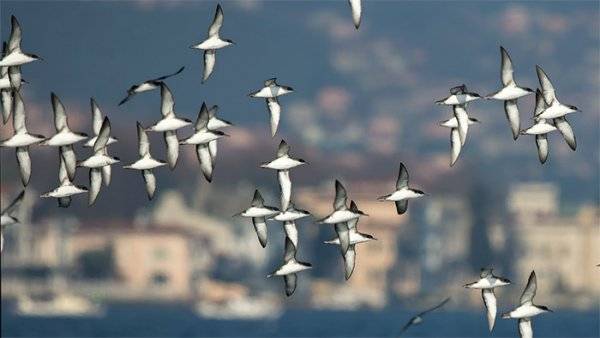Guest blog by Hana Ahmed Raza of Nature Iraq
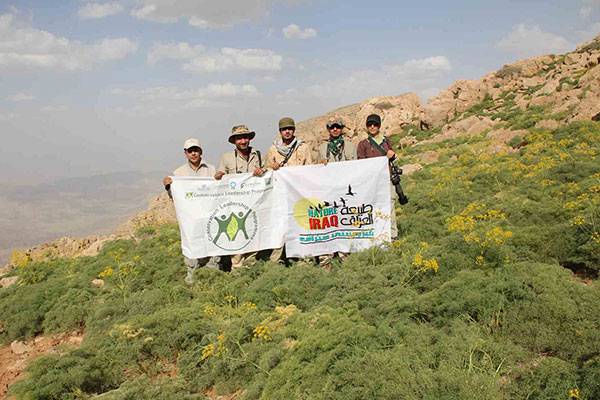
Since its abrupt establishment in Iraq two years ago, the Caliphate of Daesh (ISIS) has brought with it not only war and turmoil but a devastating infrastructure and once again turning the heads of the international donors away from funding conservation projects in Iraq, unwilling or apprehensive to invest in an unstable country.
Nature Iraq, a prominent Iraqi NGO has been a major voice to protect, restore, and preserve Iraq’s natural environment and the rich cultural heritage that it nourishes since its establishment in 2004. It is accredited to the United Nations Environment Programme and is Iraq’s Affiliate to Birdlife International, and the only Middle Eastern member of the Waterkeeper Alliance.
Since its establishment, following the fall of the former regime, Nature Iraq, despite the conflicts, has led conservation projects through empowering Iraqis in becoming leaders in the field of biodiversity conservation. Often in times when the country was going through the aftermath of the withdrawal of the US troops. One of Nature Iraq’s first programmes was in the Southern Marshlands – the New Eden project – helping restore land which was dried by the Saddam Hussain regime and which was a safe haven for local people and the wildlife that depended on it. Then through the Key Biodiversity Areas (KBA) Programme, Nature Iraq staff was able to survey over 200 sites throughout Iraq, identifying fauna and flora, discovering new species for the country and defining new distribution ranges, new breeding birds and finding elusive mammals that were once thought to be extinct in the country. This work culminated in an Inventory of Key Biodiversity Areas in Iraq – priority sites for conservation. Shortly to be published, this has been reviewed by international experts and evaluated as being one of the outstanding KBA programs in the Middle East. We hope that the KBA programme will help protect a network of sites critical for the conservation of Iraq’s biodiversity.
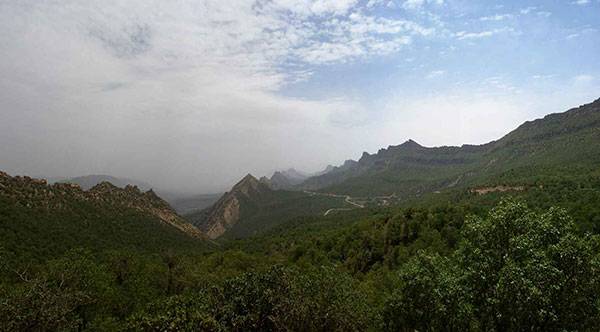
1: Qara Dagh area, proposed by Nature Iraq as a KBA site in Kurdistan (Photo by Korsh Ararat)
Given the pressure put on the environment throughout Iraq, the publication of the KBA book will be a key towards the enforcement of the conservation strategy. Building on this momentum, Nature Iraq is capitalizing on the KBA Program’s findings and developing advocacy and protection projects. The publication of the KBA Inventory is planned for later in 2016. In addition much information has been collected on biodiversity as part of programs funded by international organizations and governments, such as the Darwin Initiative, through which new data has been generated for conservation and resources for protected area management and environmental education. Darwin project was a three year conservation program, funded by the United Kingdom. Focusing on the mountains of Kurdistan, specifically Piramagroon (a mountain holding one sixth of the flora of Iraq), the project was conducted by Nature Iraq and experts from the Royal Botanic Garden Edinburgh and BirdLife International. It had an active education programme particularly aimed at schools and developed a wildlife identification App, a land-use manual and an online course in biodiversity for university students. The Darwin Project has served as a model for conservation that can be applied elsewhere in Iraq.
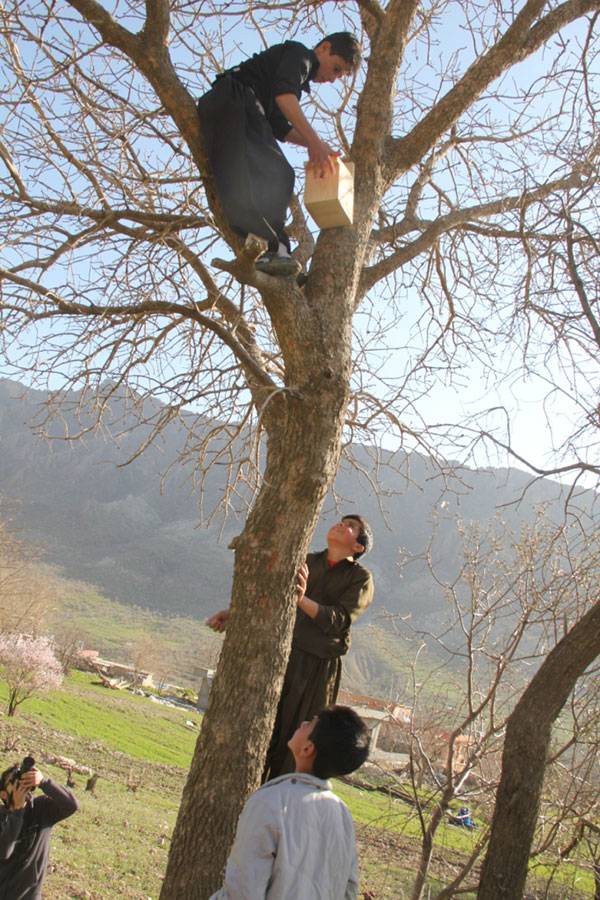
2: Secondary school students setting up the bird boxes they made as part of the Darwin education and outreach activities
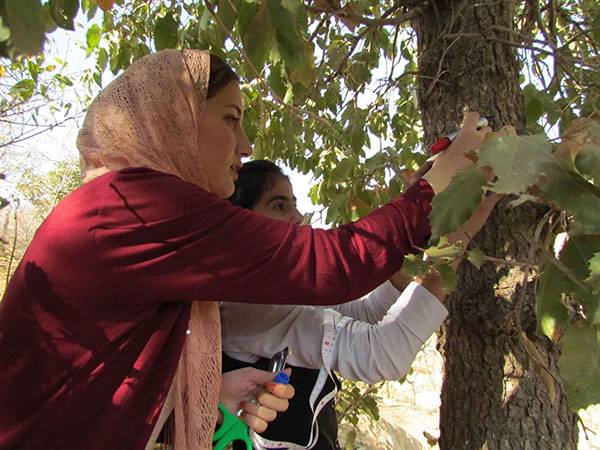
3: Nature Iraq Darwin team taking part in a citizen science program, teaching students tracking how trees respond to climate
The Conservation Leadership Programme (CPL) is another important program and conducted by young conservationists from Nature Iraq who undertook work to help protect the population of the globally Vulnerable Wild Goat Capra aegagrus and their habitats in Peramagroon and Qara Dagh mountains through education and advocacy based on the results of field surveys. The CLP team reported great success, establishing the presence of populations on both mountains where, in the past, their status in Iraq was not certain. For the first time, the Nature Iraq/CLP team has been able to make direct observations of hundreds of individuals of wild goats and photograph these shy animals. However, there is not enough information about the population in the survey areas – nor in the entire Kurdistan Region. Both mountains have been impacted by hunting pressure and the Forestry Police in the region have begun implementing controls to reduce the pressure in the last couple of years, thanks to a no hunting law that penalizes hunters caught in action. As important as this policy is, the Forestry Police tell our teams that the rules are not strict and that the penalty is not enough to effectively reduce hunting pressure.
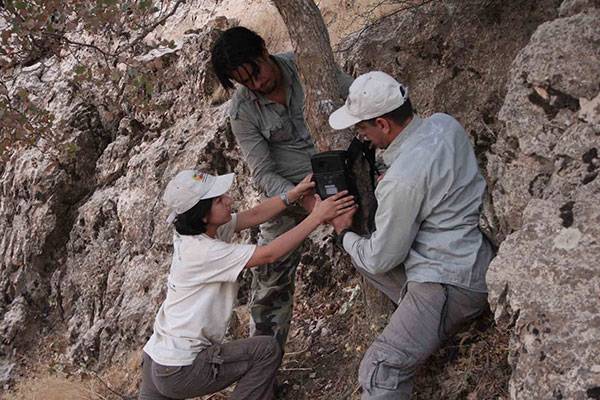
4: CLP team setting a camera trap as part of the CLP Programme
5: CLP team on Peramagroon Mountain
Today, the economic situation has, once more, taken a turn for the worse, while the government pays its employees once every three to four months, allegedly due to the increased numbers of refugees and Internally Displaced People, and the withdrawal of international companies from the region, this situation has led to a neglect in all of the sectors in general and the environment sector continues to be neglected as ever before. Conservationists who are working hard to protect Iraq’s biodiversity have been attempting to seek funds from international organizations. Today, affected by the increasing threats from ISIS, these grants are coming slowing down and hampering future conservation projects. A most recent example is the lack of funding to start a project plan to establish a protected area for the Persian Leopard Panthera pardus saxicolor and its prey in Qara Dagh and Darbandikhan in the Kurdistan region of Iraq. This project plans to map and identify the range and status of the leopard and its prey (Wild Goat Capra aegagrus and Wild Boar Sus scrofa) based on fieldwork, using camera traps, animal tracks, interviews and satellite images. Then our hope is to identify the parts of the leopards’ range where protection is needed and raise public awareness of the Persian Leopard in Iraq, especially through the media and public meetings. Alas, geographical obstacles and political turmoil is threatening not only the social livelihoods but the cultural and natural heritages of our wonderful region. Today, elusive animals and threatened habitats are neglected at the mercy of a perished local government and a rather negative international view of the region. These are just some of the issue that Nature Iraq is tackling. In a future blog from Nature Iraq we will tell you more about our recent work in the marshes of southern Iraq.
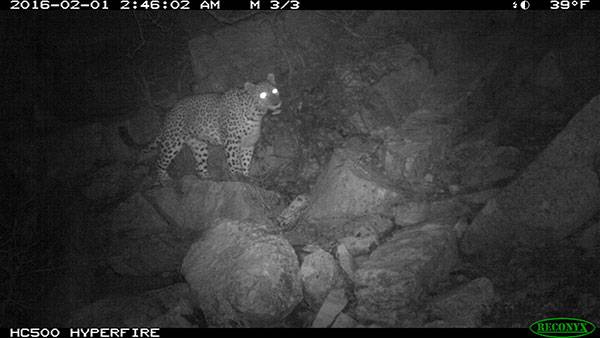
6: Nature Iraq’s recent camera trap photo of a Persian Leopard in a KBA site
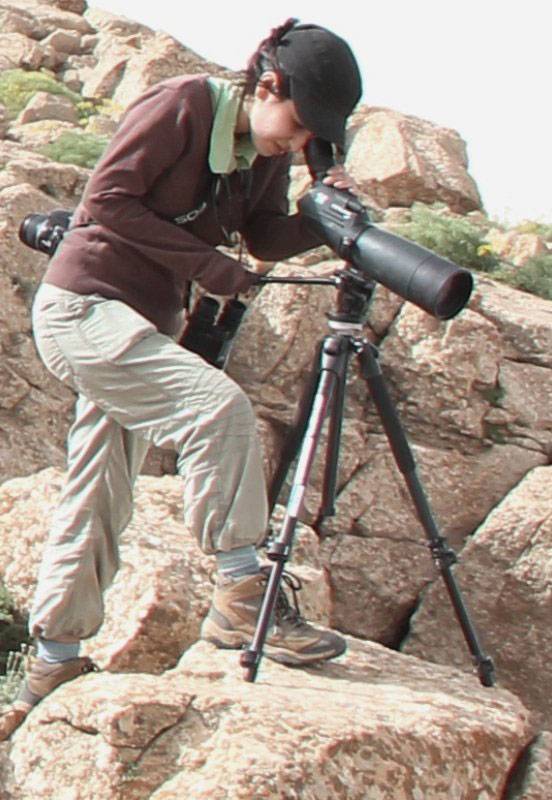
Hana Ahmed Raza is a biologist with Nature Iraq who has been working on conservation, especially of mammals, in Iraqi Kurdistan for the last seven years. She was team leader and one of the authors of the Kurdistan section of the Key Biodiversity Areas Inventory for Iraq. Hana is a member of the IUCN Cat Specialist Group and has been involved in outreach and field survey projects through camera trapping surveys, coordinating international convention meetings and workshops. She has coordinated training in mammal survey techniques as well as wildlife medicine for Iraqi Veterinarians. Hana coordinated the Conservation Leadership Programme for conserving the Wild Goats and is actively involved in lobbying for the establishment of protected areas in Kurdistan and education, particularly through public awareness and documentary films.
Iraq Nature Iraq

